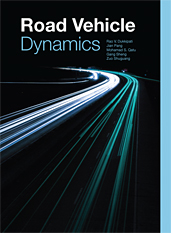Technical Paper
Study on Statistical Analysis of Uncertainty of Disc Brake Squeal
2014-04-01
2014-01-0030
Brake squeal shows a significant uncertainty characteristic. In this paper, a series of bench tests were carried out to study the uncertainty of brake squeal on a multi-function brake inertia dynamometer test bench. Then based on time-frequency analysis results, a creative squeal confirmation and determination method was presented, which can show the squeal variations in the domains of time, frequency and amplitude together. An uncertainty analysis method was also established, in which the statistical parameters of squeal frequency and sound pressure level (SPL), and probability density evaluation of frequency based on Quantile-Quantile Plot (QQ plot) were given. And a judgment method of the frequency doubling was devised based on numerical multiple and occurrence concurrence, as well as the uncertainty statistical analysis method considering frequency doubling. All the methods established were applied to the uncertainty analysis of brake squeal.


